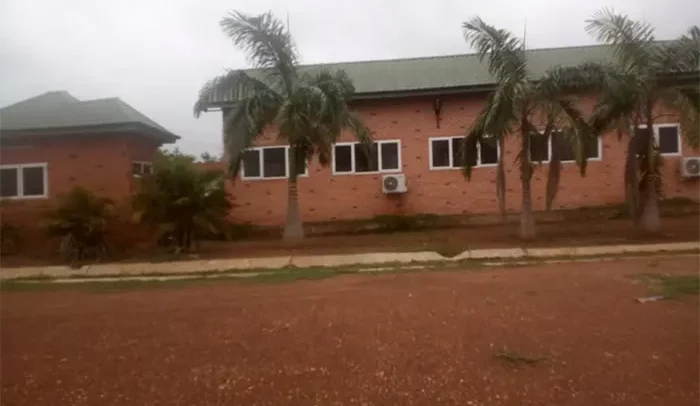The abandoned factory project at Tanoso
A flagship industrial project under the erstwhile New Patriotic Party (NPP) government’s One District, One Factory (1D1F) programme is fast decaying in the bush at Tanoso in the Tano North Municipality of the Ahafo Region, sparking widespread disappointment among residents and traditional leaders.
Initiated in 2017–2018 under a public-private partnership, the bricks, tiles, and ceramics factory – envisioned to create jobs and promote local manufacturing – now lies abandoned, overtaken by weeds and exposed to the mercy of the weather. What was once a beacon of hope has become a symbol of failed implementation and unfulfilled promises.
A visit by DAILY GUIDE to the site painted a grim picture. The factory’s administration block, which is about 80% complete, is rapidly deteriorating. Rusting roofing sheets lie on the ground, cracked walls line the structure, and electrical wires, water closets, and light fixtures are wasting away, unused. The main gate to the factory floor has fallen apart, glass windows are shattered, and broken polytanks have been swallowed by overgrown grass.
“The project brought a lot of excitement. During construction, many of our youth were employed and the town became vibrant,” said Abubakari, a resident living near the site. “But today, it’s like a ghost town; nothing is happening. We’re disappointed,” he lamented.
Nana Kwabeng Peni, Adontehene of Tanoso, also expressed concern over the abandoned factory. “The chiefs and people of Tanoso had high hopes that this factory would bring development, jobs, and dignity to the youth. Now all we see is decay. It is painful,” he told DAILY GUIDE.
The factory was expected to supply bricks and ceramic tiles for both the domestic and export markets, boosting local industry and employment. However, due to what sources say is a lack of capital injection from the private partner, the project has stalled indefinitely.
“Our expectations have been dashed,” lamented Yaa Augustina, another resident. “This is a heavy investment going to waste while our youth are idle, turning to social vices, and young girls face rising teenage pregnancies. This project could change lives.”
Despite the factory’s abandonment, residents have not looted the facility. Locals say their restraint is a sign of hope that government will return to revive the project. “Nothing has been stolen. Everything is as it was. We are just charitable and hopeful,” Abubakari said.
The site’s factory floor, which was partly erected with iron and steel, is now rusting away. Metal frames for sheds are lying idle, submerged in weeds. Dustbins, canopies, and office pipes hang loosely as the building suffers from the elements.
The Adontehene is calling on the current government and development partners to intervene. “This is not just about Tanoso. This factory has the potential to serve people from Sosoanso, Adrogbaa, Techire, Abesim, Sunyani, Duayaw Nkwanta and other areas in the Ahafo and Bono regions. It could also contribute to the success of the 24-hour economy policy,” he said.
He appealed to the government, NGOs, financial institutions, and investors to come to the aid of the project. “Let us not allow this investment to go to waste. Let’s revive it and give meaning to the dream of industrialisation and youth employment,” he stated.
From Daniel Y. Dayee, Tanoso


